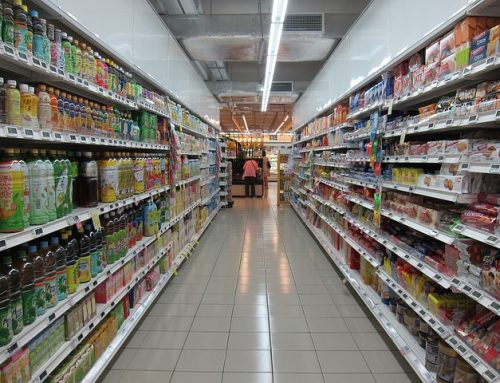August 25, 2023
Oil Market Report – August 2023
- World oil demand is scaling record highs, boosted by strong summer air travel, increased oil use in power generation and surging Chinese petrochemical activity. Global oil demand is set to expand by 2.2 mb/d to 102.2 mb/d in 2023, with China accounting for more than 70% of growth. With the post-pandemic rebound running out of steam, and as lacklustre economic conditions, tighter efficiency standards and new electric vehicles weigh on use, growth is forecast to slow to 1 mb/d in 2024.
- Global oil supply plunged by 910 kb/d to 100.9 mb/d in July. A sharp reduction in Saudi production in July saw output from the OPEC+ bloc fall 1.2 mb/d to 50.7 mb/d, while non-OPEC+ volumes rose 310 kb/d to 50.2 mb/d. Global oil output is projected to expand by 1.5 mb/d to a record 101.5 mb/d in 2023, with the US driving non-OPEC+ gains of 1.9 mb/d. Next year, non-OPEC+ supply is also set to dominate world supply growth, up 1.3 mb/d while OPEC+ could add just 160 kb/d.
- Refinery throughputs are set to reach a summer peak of 83.9 mb/d in August, up 2.4 mb/d since May and 2.6 mb/d higher than a year ago. The increase in refined product output has failed to ease product market tightness, pushing gasoline and middle distillate cracks to near record-highs. High sulphur fuel oil cracks provided further support to margins, which pushed above 2022 levels in July.
- Russian oil exports held steady at around 7.3 mb/d in July, as a 200 kb/d decline in crude oil loadings was offset by higher product flows. Crude exports to China and India eased m-o-m but accounted for 80% of Russian shipments. Higher oil prices, combined with narrowing discounts for Russian grades, pushed estimated export revenues up by $2.5 bn to $15.3 bn, $4.1 bn below year-ago levels.
- Global observed oil inventories declined by 17.3 mb in June, led by the OECD. Non-OECD stocks and oil on water were largely unchanged. OECD industry stocks fell by 14.7 mb, in line with the seasonal trend, to 2 787 mb. Industry stocks were 115.4 mb below the five-year average, with product inventories particularly tight. Preliminary data suggest global inventories drew further in July and August.
- ICE Brent futures rallied by $11/bbl to $86/bbl in July as macroeconomic sentiment improved markedly with inflation easing. Tightening physical balances in the wake of Saudi output cuts and lower Russian loadings added additional momentum to the price rebound, pushing crude forward curves deeper into backwardation. At the time of writing, Brent traded around $87/bbl, close to 2023 highs.
Global oil prices moved steadily higher during July and into early August, reflecting a market tightening long projected by this Report. Deepening OPEC+ supply cuts have collided with improved macroeconomic sentiment and all-time high world oil demand. North Sea Dated rose by $10/bbl over the month to around $85/bbl, its highest since April. With output cuts hitting the heavy sour crude market hard, Dubai crude is trading at a rare premium to Brent, while the price of Urals crude has breached the G7-led price cap now making all Russian oil exports ineligible for G7 and EU maritime services.
In July, oil supply from the OPEC+ alliance fell by 1.2 mb/d to a near two-year low as a voluntary reduction from Saudi Arabia came into effect. At 50.7 mb/d, the bloc’s production was down more than 2 mb/d from the start of the year. Over the same period, producers outside the group ramped up output by 1.6 mb/d to 50.2 mb/d but limited non-OPEC+ gains are expected for the remainder of the year. The US, Brazil and Guyana lead the expansion, with exports from the trio rising by roughly 15% y-o-y to more than 9 mb/d in July, boosting the availability of light sweet grades in the Atlantic Basin. The US accounts for nearly 80% of global 2023 supply growth, or 1.2 mb/d of the 1.5 mb/d total. Next year, that share is set to slip as activity slows in the shale patch.
World oil demand hit a record 103 mb/d in June and August could see yet another peak. After months of lacklustre readings, OECD demand was revised up for May and June, with overall consumption returning to growth in 2Q23 after two quarters of contraction. Chinese demand was also stronger than expected, reaching fresh highs despite persistent concerns over the health of the economy. For the year, global oil demand looks on track to expand by 2.2 mb/d to 102.2 mb/d, its highest ever annual level. With the post-pandemic recovery having largely run its course and as the energy transition gathers pace, growth will slow to 1 mb/d in 2024.
Refiners are struggling to keep up with demand growth, as the shift to new feedstocks, outages and high temperatures have forced many operators to run at reduced rates. Tight gasoline and diesel markets have pushed margins to six-month highs. While naphtha remains under pressure, due to competition from cheap LPG and weak petrochemical activity outside of China, high-sulphur fuel oil has tightened significantly as refiners replace lost OPEC+ crude with lighter and sweeter grades. High sulphur fuel oil in Rotterdam rose above North Sea Dated for the first time in 28 years.
As a result, crude and products inventories have drawn sharply. In July, observed oil stocks decreased for a third consecutive month, with OECD industry stocks more than 100 mb below the five-year average. Market balances are set to tighten further into the autumn as Saudi Arabia and Russia extend supply cuts at least through September. An ample OPEC+ spare capacity cushion of 5.7 mb/d means there is significant scope for the alliance to raise output later in the year. Additional supplies of heavy sour crude would allow refiners to boost activity and help ease product market tensions. But if the bloc’s current targets are maintained, oil inventories could draw by 2.2 mb/d in 3Q23 and 1.2 mb/d in the fourth quarter, with a risk of driving prices still higher.
Source: International Energy Agency
Legal Notice: The information in this article is intended for information purposes only. It is not intended for professional information purposes specific to a person or an institution. Every institution has different requirements because of its own circumstances even though they bear a resemblance to each other. Consequently, it is your interest to consult on an expert before taking a decision based on information stated in this article and putting into practice. Neither Karen Audit nor related person or institutions are not responsible for any damages or losses that might occur in consequence of the use of the information in this article by private or formal, real or legal person and institutions.






